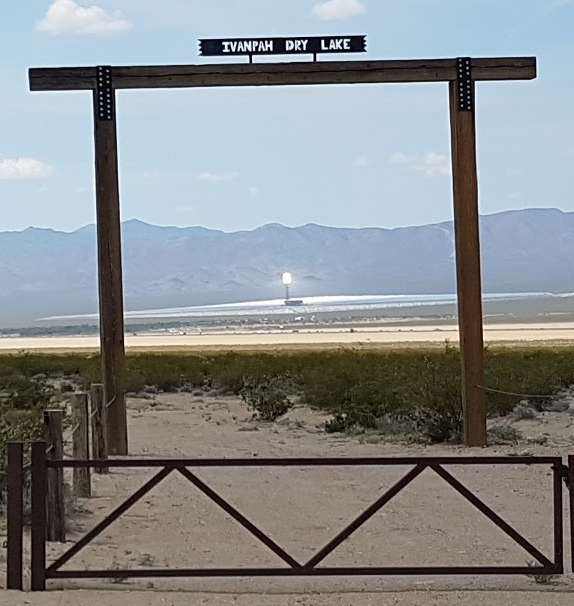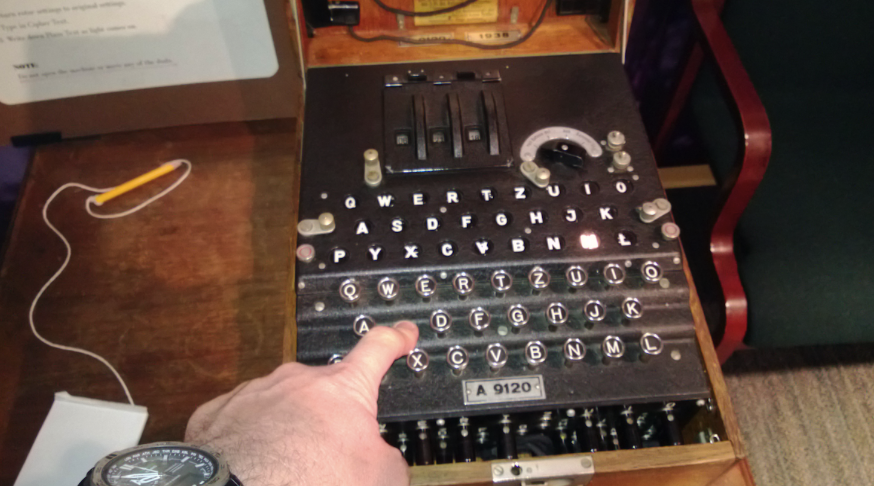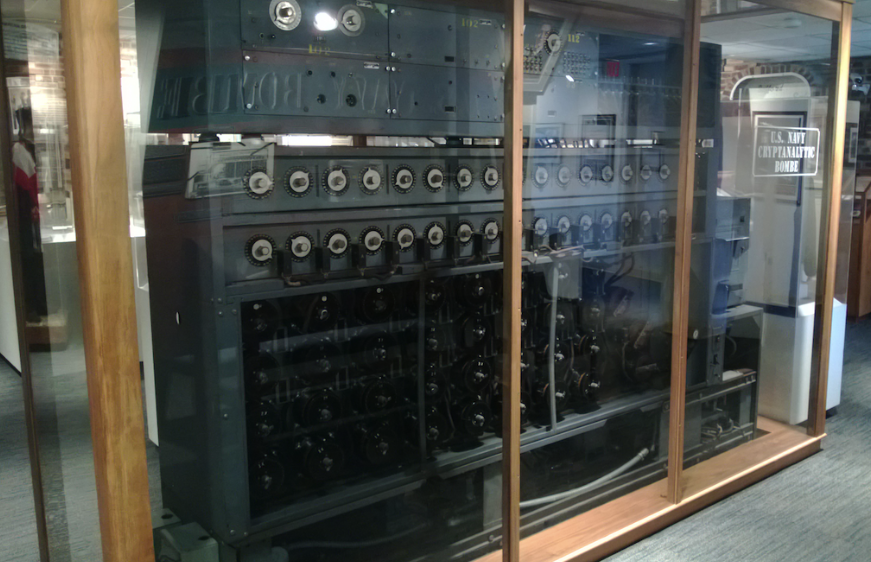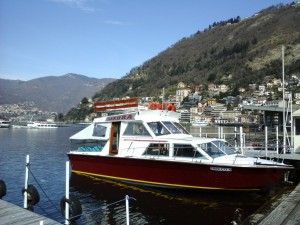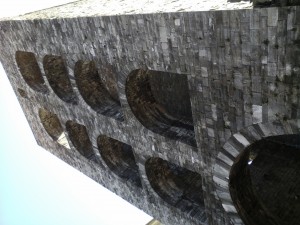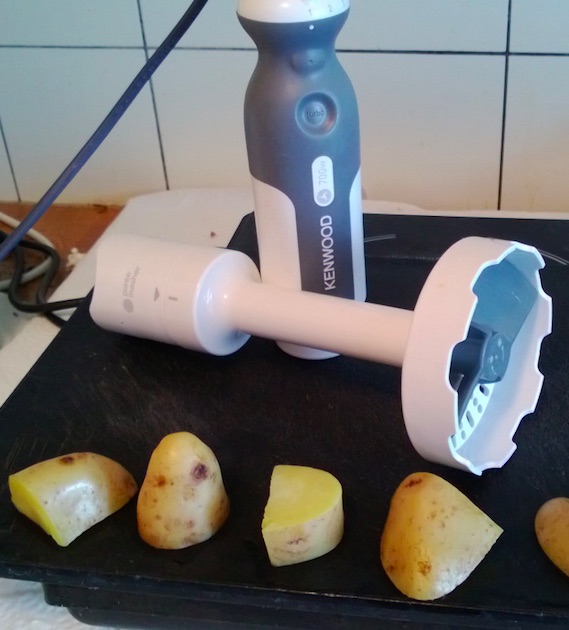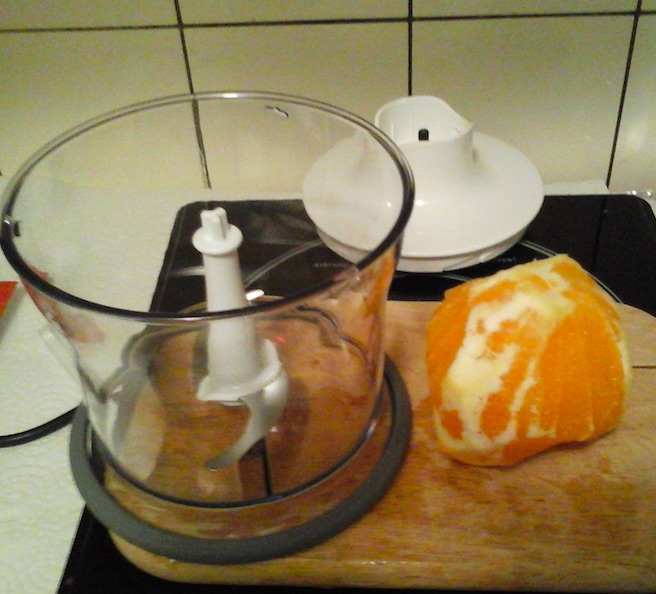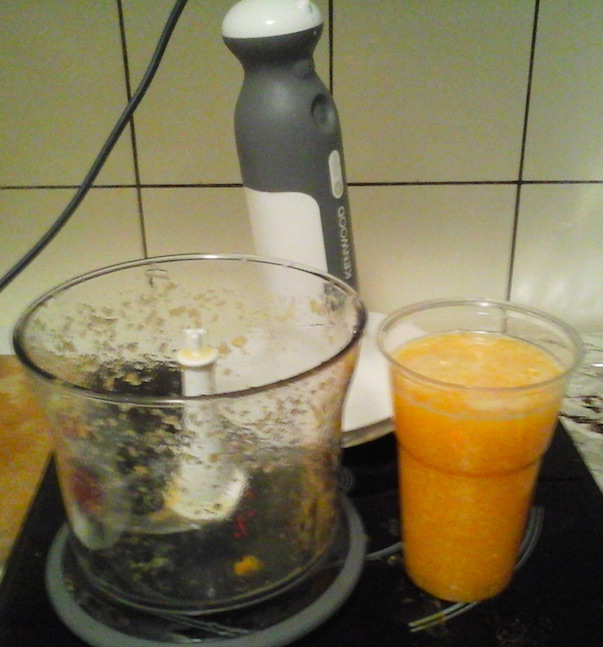
Author: kenritley
Thionville
Thionville, probably not in any tourist books, but a small and quiet town, definitely worth visiting if you are in this part of France.
Ask Mr. Tradecraft – 2
Dear Mr. Tradecraft, I’m a middle-aged operator with experience now on three continents. On each of them, from older (and wiser) operators, I’ve heard rumors and speculation about something called Code 16. But nobody can tell me what it is – is this a special tactic? Perhaps a famous black operation? – Suspicious person yearning.
Dear SPY.
Neither. It’s an black-ops organization, but the details are not fully known.
Here’s what we know. Everyone’s heard of the Navy SEALS: take soldiers with world-class athletic ability, put them through insane training, and punish them in a “Hell Week” without sleep. Those that make it through become the world’s top warriors – or so they say. In 1996 an analyst in the psychology group of the Center for Naval Analysis studied all graduating SEALs and those who dropped out. She found an amazing correlation: the candidates who dropped out during Hell Week had an intelligence quota of 16 points higher than those who made it through or dropped out earlier. For non-experts, that’s the difference between average and genius. Thus was born the idea for Code 16.
Think about it: find soldiers who’ll die to carry out orders and what do you have? Super soldiers willing to follow orders and die. And of course that’s good – sometimes you need that. But find soldiers who drop out just before the end and what do you have? The same super soldiers, but those who can think, who need to see the Big Picture; those who also value their own lives and well-being. As any operator knows, those are more valuable traits for our line of work. Presumably, a select group of these “last dropouts” is handpicked to join Code 16 – probably those with skills in multiple languages.
Who runs Code 16? Nobody knows, but the current speculation is a joint U.S. / French group with a focus on Northern Africa.
Where are they based? Nobody knows, but my guess is a big city – partly for urban training opportunities. But also the best way to hide a group of men with strange body language is probably in plain sight.
How do you identify them? That’s probably the easy part. If you have access to a wire news search engine (like the newspapers use), search the obituaries for young men, early 30’s, Navy enlisted (or my guess: French Foreign Legion as well), dropped out of the program, and were killed – preferably cremated. Not all of them are Code 16 – but that’d be the place to start.
Note from Ken: I’ve known him for years, but I never know when I’ll hear from him. Gladly, he’s back, not sure for how long, and I hope he has time to start emptying his mailbox.
After many decades, Mr. Tradecraft remains a much-sought-after operator for the most demanding contracts with governments, corporations, and private parties alike. He has over 30 years of international field experience that span the whole spectrum of clandestine services, from cut-outs, snatch-and-grabs, bag jobs, surveillance, to wet work — much of it spent in red zones. His retirement increasingly near, Ask Mr. Tradecraft is the pro bono way he gives back to the community. If you’d like to ask him a question, please submit it to Ken – but due to obvious reasons there may be a wait of many months before he can respond to your question.
MyPost24: The Swiss innovation hasn’t stopped yet!
For more than I year I’ve been a big fan and user of the Swiss postal system’s electronic portal for snail mail. Any snail mail you get is not delivered to you directly, but instead it is re-routed to a special post office where it is opened and scanned. You are notified about any new snail mail via email – and you can look at your mail, delete it, or chose to have it snail mailed to you or anyone else.
Just when you think it can’t get any more innovative: MyPost24! This is an automated post office. It is a standalone collection of lockers – and with this system, you can receive packages or snail mail, or you can send packages or snail mail.
I can imagine they have systems like this in other countries . . . but it is wonderful to see how the Swiss are among the first adopters of new and innovative technologies!
Instant Soup got its start in Switzerland
I’ve lived in countries like India with an older history – but I’ve never lived in any country with more history than Switzerland. There is an historical artifact or monument or place on every corner.
So I was hardly surprised to see this historical plaque just a few kilometers from where I live, at the train station in Kempthal.
Everyone takes instant soups for granted these days, but this is the factory in Winterthur where Mr. Maggi, a Swiss entrepreneur, invented them:
Even today, and far more than in any other country in Europe, that spirit of invention and entrepreneurship pervades Switzerland – and it is a big reason I enjoy living here so much!
Seven Magic Mountains
A stunning art display just outside of Las Vegas, from Swiss artist Ugo Rondinone.
Ivanpah Solar Facility
Just outside of Las Vegas, the Ivanpah Solar Facility is the closest thing to pure science fiction that I’ve ever seen.
Expectations 2016
Orléans
The town of Orléans north of the Loire Valley in France is where New Orleans got its name!
Lugano
Terrific view next to an old-but-not-abandoned inclined railway in Locarno.
Saline royale d’Arc-et-Senans
It’s a bit off the beaten path, but if UNESCO says it’s worth a visit then it usually is.
What was really impressive is their museum dedicated to salt mining and salt production around the world.
Test Tower
The Thyssen Krupp test tower is just amazing.
The importance of elevators takes on a whole new meaning when you read the blurb from Thyssen Krupp’s website,
Over 70 percent of the world’s population will live in cities by 2050. . . . A report from the McKinsey Global Institute estimates that cities will need to construct floor space equivalent to 85 percent of all of today’s residential and commercial building stock by 2025, making this one of the greatest challenges of our time.
Berlin-Wannsee Bahnhof
I was here to visit das Haus der Wannsee-Konferenz but this sign was the only thing I felt like photographing.
Macau
The Zürich Cruiser
The Nation’s Capital
I recently visited Washington DC, which I had not visited in many years. I thought some areas (particularly north of the White House) seemed much safer and cleaner than I remember. I saw the White House:
And there is a whole building dedicated to the guy on the 5-dollar-bill:
It makes sense he would get his own building, because the guy on the 1-dollar-bill only got a big concrete stick:
The Smithsonian museums are worth seeing. Their Natural History Museum, for example, has tiny little elephants:
Now, this building looks like a spaceship or an attraction at Disneyland, so you could not be blamed for guessing this is in fact a Mormon temple:
Finally, I visited the NSA in Ft. Meade, Maryland. There is an interesting slogan I saw on a T-Shirt for sale in their gift store: “The NSA: the only government agency that actually listens to you.”
In their museum they have a large collection of Enigma machines, an old Cray supercomputer you can sit on, and other stuff:
A real unexpected surprise was to see a real BOMBE machine, which was used to decrypt devices like the Enigma. The UK apparently junked all of their BOMBE machines, so I was not aware that some were still in existence:
We, the adaptable
As I previously reported here and here, during the last crises in Gaza, I took a trip to Jerusalem. On the one hand I wanted to see and experience for myself what life was really like in this country at this time — but on the other hand, I am not completely stupid, and a hotel within rocket distance of Gaza was out of the question for me. I Jerusalem I saw this sign hanging in my hotel:
There was a rocket warning just the day before I arrived, but the local folks I spoke with seemed used to taking this in stride. It’s really quite amazing, and it just to goes show you amazing how adaptable we humans are.
Western Wall
This is the Western Wall, one of Judaism’s holiest sites.
A few things struck me when I visited it. First, it was much smaller than I had expected.
Second, it was interesting to look at the various pilgrims and visitors. Some were tourists, like me. Some were extremely pious people for whom this was a once-in-a-lifetime event. And others seemed to be “regulars” who came here often.
Città di Como
The small town of Como is located on Lake Como in northern Italy, just across the border with Switzerland. With a car it’s less than a three hour drive from Zürich, so while you’ll find some Swiss residents here on the weekend, it is quite surprising you don’t find more of them.
This shot is pretty but not remarkable:
And this snap is also pretty but not remarkable:
But now to compensate this boredom, here are two remarkable things! First, this is a building whose purpose I cannot fathom. The arches seem much too small to bear any weight, so it’s not clear to me what purpose they served. Second, there is a BUG in the content management system I am using. The picture is not rotated in any way, as you’ll see if you click on it. But the media import module in WordPress – for whatever reason – has created a rotated thumbnail!
So, as is the theme for my website, sometimes you can find the most remarkable of things in the least remarkable places!
Hidden canals #2: Canal du Rhône au Rhin
Here’s why I find canals so fascinating: they were massive, transformational public works projects, still visible today, but whose need and impact to society have all but left our cultural awareness.
And here’s why I find hidden canals so fascinating: out-of-sight, out-of-mind. Dismantling sections of a canal, or covering them over, or filling them in, is the the first step in their disappearance from public knowledge and their relegation to archeology. Ask anyone about a hidden canal, and they will tell you they vaguely remember something but usually can’t quite put their finger on what they remember.
Continuing the series, this is a section of the Canal du Rhône au Rhin in village of Mulhouse, in the eastern part of France:
And here is the bit that is now hidden, covered over by a park and a busstop:
Just to prove a canal is truly hidden here, I simply turn 180-degrees to get this view:
And here is a historical photograph. Next time I get to Mulhouse I’ll have a look if I can find any of these old buildings. But you’ll see immediately from this picture how prominently this canal was incorporated into the landscape architecture : the city was proud the canal ran through it, and the integration (both landscape and cultural) was tight.
Table Top Review: The Kenwood HB724 hand blender review – no ordinary potato masher, this
Continuing the series, is it just me or does everything containing the word “KEN” have extraordinary talent, exquisite design, and unsurpassable quality? At least, the Kenwood HB724 hand blender is no exception.
After boiling some potatoes it was time to put the “Potato Puree” attachment to work.
No ordinary attachment this, it would more aptly be named “potato auger:” it contains a reduction gear and a black plastic paddle, and the potatoes are lifted upwards and pressed through the holes.
Here you can see the potatoes as they are squeezed through the holes, helping to puree them.
 Here you can better see the effect of the potatoes angered through the holes:
Here you can better see the effect of the potatoes angered through the holes:
Finally, although I am not showing it here, cleanup is a snap. The plastic auger blade detaches from the assembly, and you clean everything up with just a gentle rinsing with warm running water.
Overall comments and feedback
The reduction gear ensures the auger blade turns at the perfect speed to puree potatoes. The size of the holes through which the potato puree passes are perfectly designed. And I was pleasantly surprised: this device worked very well with the very small number of potatoes I cooked (some devices really only work when you have a large amount of potatoes).
Was it worth it?
Yes, absolutely!
Negatives & Suggestions to Kenwood for improvement?
Nothing.
Further reviews on this topic needed?
No. I didn’t mention it here because I didn’t use it or describe it above – because I think nobody would believe it – but something happened that I myself can hardly believe. I cooked my potatoes without peeling the skin. After multiple cycles of the potato auger the skins were all filtered out from the potato puree and kept within the auger housing – in effect, the Kenwood acted as a potato skin filter! This is an added bonus – but it is so wonderful, I think it would almost be straining credibility for me to mention this!
Would I do this again?
No fuss no muss – I’d use the Kenwood for freshly mashed potatoes every day of the week and twice on Sundays! Here I want to re-iterate, for the second time, the philosophy of use, or PoU: I kept the Kenwood power unit permanently plugged in and sitting on my kitchen countertop, ready for action. So at a moment’s notice and without any effort at all, I could bring out the attachments I needed.
Reflections of a Valley Guy – Part 5: “Mr. Yee & the Albrae Street–Taiwan Connection”
A guest blog, by Chuck Ritley
Here’s a bit of history: Intel introduced the 16-bit 8086 CPU in 1978. It was a tad expensive, and soon followed by the cheaper 8-bit 8088. These little gadgets put mainframe logic in a tiny, affordable package. And soon garage wizards figured out how to build full computers.
IBM jumped on it and did the world a big favor: they invented “Open Architecture” with the release of the first IBM Personal PC. A simple design, freely publicized, it opened the door to anyone who could assemble: a motherboard with BIOS, expansion slots, and controller chips; an 8088 CPU; some memory; keyboard; monitor; and floppy disks for storing data. No big deal.
The floodgates opened. Everyone who assembled electronics brought out “IBM compatible” PCs: Zeos, Tandy, Compaq, Packard Bell, AMD, Gateway, H-P, Wang, TI, Sanyo, and – of course – Dell.
For the first time, there was a “free market” for computers. Good? Well, almost. Everyone wants to make money, and the industry had a “price point” of about $1000. You could save a few bucks by buying from Dell or Zeos – but only a few. So “IBM clones” were cheaper, but not that much.
This tidal wave rolled over The Valley, and entrepreneurs started “White Boxing”: building clones from parts at discount prices. The heart of the White Boxing “industry” was Albrae Street, a small street of storefront-warehouses combos, like mini strip malls, right near the mud flats of San Francisco Bay.
 The local “computer press” (like “Computer Currents”, free at the 7-11) ran huge ads, offering PCs for $700 or so. Still too much for the true geeks who thought “If they can assemble one, then I can, too.” So they descended on the White Boxers, not for PCs – but for parts. I know – I was one of them.
The local “computer press” (like “Computer Currents”, free at the 7-11) ran huge ads, offering PCs for $700 or so. Still too much for the true geeks who thought “If they can assemble one, then I can, too.” So they descended on the White Boxers, not for PCs – but for parts. I know – I was one of them.
We haunted the warehouses, hunting bargains. And found that even parts could be “cloned”. (Whether or not this was legal is not a priority with geeks.) For example, when you wanted a 5-inch floppy drive, you could buy a Shugart or Memorex (the same as IBM used), OR – – – – you could buy a “knock-off” with no label and manufactured in Taiwan for much less. But, hey, it still worked.
Enter Mr. Yee – who soon became The King of the Bay Area parts empire. Mr. Yee sold full-size clones, with name brand parts, at good prices, and clones with no-name parts at even better prices. His whole extended family worked back in his warehouse, and could assemble a PC in minutes, “burn it in” that night, and you pick it up tomorrow. (I suspect that they all lived back there, too, but parts were cheap, so Immigration can mind its own business.)
Parts – that’s where Mr. Yee shined. Whatever you needed – Mr. Yee had one cheap. No name, no label, but it always worked just fine. Truth be known, this was the beginning of the end for “Made in America”.
I saved up, bought parts for my first PC, and Mr. Yee threw in a copy of DOS and an x86 assembler. A few hours with tools, and it ran. I got a copy of Lotus 123, some utilities, and started on the road to expertise.
A few months later, my son Ken returned from a summer internship at the Oak Ridge National Labs where he had worked on Cray supercomputers, wanted his own computer (not a Cray), and had been saving up. Not impressed that his old man had actually built a PC, Ken preferred one “professionally assembled”, so off to Mr. Yee. Ken went first-class on his order: a full 640K of memory and, as I recall, it was a turbo-chip 8086 which could shift up from its usual 4.7 Hz cycle to a screaming 8.0. The frosting on the cake: a 1200 baud modem.
Those days are gone. Today few users can change a battery. No one has any tools, and help and advice comes by phone from someone in a different country. We used to grow our own food, fix our own cars, sew on our own buttons, and build – and “burn in” – our own computers. Have we evolved? I’m not sure.
This guest blog was submitted by Chuck Ritley, an adjunct professor of computer science with several major universities in the San Antonio area.
Here are the links to the other blogs in this series:
Reflections of a Valley Guy – Part 1: “The Way It Was”
Reflections of a Valley Guy – Part 2: “First Wave of Characters”
Reflections of a Valley Guy – Part 3: “Evolution of the Geek”
Reflections of a Valley Guy – Part 4: “When Giant Frys.com Sold Pork Chops”
Reflections of a Valley Guy – Part 5: “Mr. Yee and the Albrae Street – Taiwan Connection”
Table Top Review: The Kenwood HB724 hand blender review – three types of fresh Italian pesto
Continuing the series, for almost seven years I worked as short-order cook in a cafeteria with service for up to 300 people. When I worked in a professional kitchen, all the equipment and tools we needed were professionally maintained, right at hand, and ready to go. And after using the equipment, we had people whose job it was to clean up. Not so in the home kitchen, where there is limited space, and where I have to do the clean up myself.
So for me, the main challenge of electric kitchen gadgets (like blenders and mixers and juicers) is that it is difficult to obtain a net overall win/win situation: the needed overhead (pulling them out, setting them up, cleaning them up, stowing them) quite often exceeds the pleasure or value or time savings provided by the gadget.
In attempt to rebalance this equation in my favor, I recently purchased a Kenwood HB724 hand blender.
In the coming blog entries, I will give some table top reviews of using my new Kenwood blender, and especially try to answer the question: was it so easy and convenient and effective that I will be using it for this purpose again?
The Kenwood HB724 hand blender makes three types of fresh Italian pesto sauce
What is amazing and unbelievable: the U.S. grows more garlic than any other country, yet fresh, undried garlic (not picked-early-and-dried-out garlic) is not readily available. This is a bulb of succulent, wet, juicy garlic, probably just a few days after being picked from the stalk:
Not yet having been dried, the bulbs are wet, and the skins are wet with the texture of any other fresh vegetable. Interestingly, you peel the garlic just like you’d peel a fresh banana:
Here are the other ingredients, including fresh basel leaves, fresh Parmesan Reggiano cheese, and two types of nuts: pine nuts for a smooth, creamy texture; and cashews for a light, nutty taste. Note the level of the high quality extra virgin olive oil.
And here are the results: I made a sun dried tomato pesto (front center), consisting of just garlic, sun dried tomatoes, olive oil, and chili flakes; a green pesto (right); and a “mixed” pesto (left) that is essentially the green pesto, but with sun dried tomatoes and chili flakes. I made the pesto quite thick, so that I could store it in the refrigerator for several days. Before using, I’ll heat and add more olive oil.
Overall comments and feedback
Having already made orange juice, I was not surprised at the smoothness of the grinding action. But I was pleasantly impressed at how well the addition of extra nuts and garlic into the pesto-in-progress was incorporated, which shows this grinder’s excellent mixing action. What also impressed me on this job was the shape and size of the mixing unit: it is large enough for a sizable portion of pesto, it has a large enough mouth to make it easy to add the ingredients – but it is small and compact enough so that I won’t think twice about using this great device for similar food preparation jobs.
Was it worth it?
Yes, absolutely!
Negatives & Suggestions to Kenwood for improvement?
Nothing.
Further reviews on this topic needed?
Yes. I didn’t mention it here because I didn’t use it, but the mixing bowl comes with a plastic lid. This means you can prepare sauces in the mixing bowl, then simply cover the bowl with the lid and insert it into the refrigerator. I plan to test this feature in up coming recipes.
Would I do this again?
No fuss no muss – I’d use the Kenwood for fresh Italian pesto every day of the week and twice on Sundays! Here I want to mention, for the first time, the philosophy of use, or PoU: I’ll be keeping the Kenwood power unit permanently plugged in and sitting on my kitchen countertop, ready for action. So at a moment’s notice and without any effort at all, I can bring out the specific mixing attachments I need – thus lowering that “effort barrier” that plagues all fancy electric kitchen gadgets and discourages their long-term use (or discouraging them becoming part of your daily cooking system).
Table Top Review: The Kenwood HB724 hand blender review – orange juice
For almost seven years, I worked as short-order cook in a cafeteria with service for up to 300 people. When I worked in a professional kitchen, all the equipment and tools we needed were professionally maintained, right at hand, and ready to go. And after using the equipment, we had people whose job it was to clean up. Not so in the home kitchen, where there is limited space, and where I have to do the clean up myself.
So for me, the main challenge of electric kitchen gadgets (like blenders and mixers and juicers) is that it is difficult to obtain a net overall win/win situation: the needed overhead (pulling them out, setting them up, cleaning them up, stowing them) quite often exceeds the pleasure or value or time savings provided by the gadget.
In attempt to rebalance this equation in my favor, I recently purchased a Kenwood HB724 hand blender.
In the coming blog entries, I will give some table top reviews of using my new Kenwood blender, and especially try to answer the question: was it so easy and convenient and effective that I will be using it for this purpose again?
The Kenwood HB724 hand blender makes orange juice
It will be interesting to see how much juice can be made from one large orange, shown here:
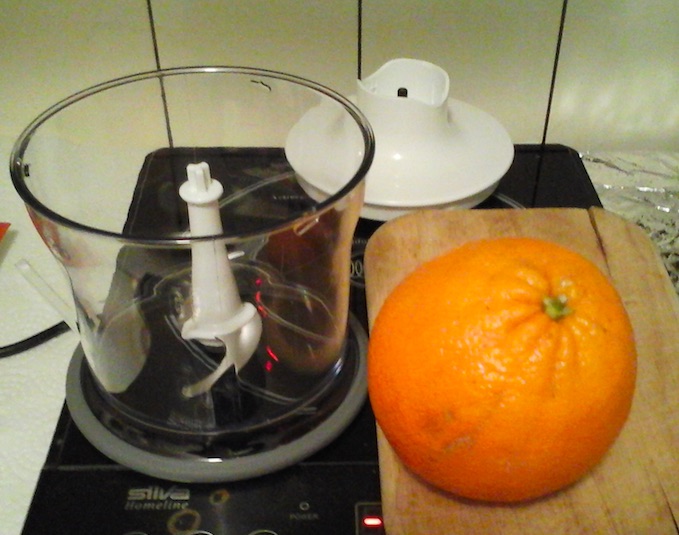
I cut off the peel quickly and roughly, leaving bits for added vitamins and fiber:
Into to the Kenwood blending attachment, and attach the motor wand to the top:
And after about 20 seconds of blending, it makes a full glass!
Overall comments and feedback
The actual grinding was much faster than I expected, I think due to the very well designed blades that cause a very good mixing. Assembling the unit was also easier than expected, because the design is exceptional and all the pieces fit together easily, just by feel. Grinding was easy, because the normal power button and the turbo power button are both very easy to press. And the grinding attachment has a rubber ring that prevents it from sliding on the table top. Pouring from the mixing attachment into a glass was also straightforward and entailed no mess. Cleanup was also easier than I expected, because the plastic is water repellent – just a gentle rinse in the sink was all that was needed.
Was it worth it?
Yes, absolutely!
Negatives & Suggestions to Kenwood for improvement?
Nothing.
Further reviews on this topic needed?
The Kenwood cut through the orange like butter, but oranges are soft. It will be interesting to repeat this recipe with ice or with fruit such as apples that are tougher and may be more difficult to blend.
Would I do this again?
No fuss no muss – I’d use the Kenwood for fresh orange juice every day of the week and twice on Sundays! Since I like pulpy orange juice, the results were delicious. Including cleanup, it hardly required more time to set up and prepare than it would to open a carton of store-bought orange juice.
Hills Like White Elephants
This is the city of Zaragoza, in the region of Spain called Aragon. This is the famous Basilica of Our Lady of the Pillar church, visited by Popes and pilgrims worldwide. It was here that many people think Hemingway drew inspiration for his short story, Hills Like White Elephants.






